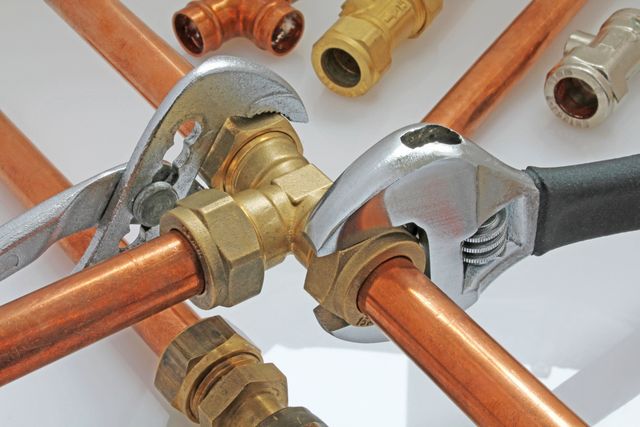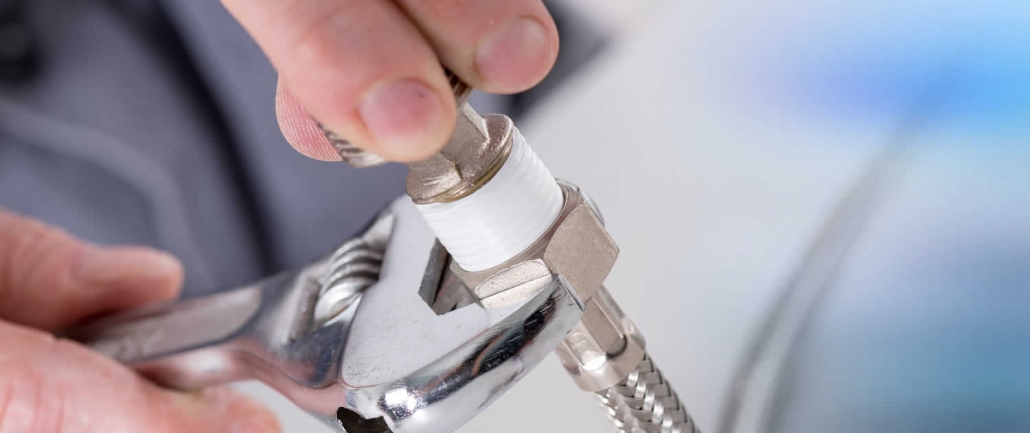Quick Plumbing Fixes for Emergencies: Actions to Take Until Help Arrives
Call TodayEach person maintains their own unique perception on the subject of What to Do During a Plumbing Emergency.

Pipes emergency situations can strike at any time, causing tension and potential damages to your home. Whether it's a ruptured pipeline, a clogged drainpipe, or a dripping faucet, understanding how to handle the scenario till a professional plumbing shows up can conserve you from more issues. This article offers essential emergency plumbing suggestions to aid you reduce damages and gain back control throughout a plumbing situation.
Shut off the Water Supply
The very first step in any kind of plumbing emergency situation is to shut down the water supply. For localized issues, such as a leaking tap or bathroom, shut off the valve near the component. When it comes to a major leak or burst pipeline, situate your home's major water shut-off shutoff and turn it off right away. Knowing the area of these shutoffs ahead of time can conserve beneficial time during an emergency.
Address Tiny Leakages with Short-lived Solutions
Little leaks can rapidly end up being significant problems if left unchecked. Make use of these momentary repairs until professional help gets here:
While these fixes aren't irreversible, they can assist minimize water loss and damages.
Unclog Drains Safely
A clogged drainpipe can be a frustrating and untidy issue. Right here's how to tackle it:
If these methods don't function, avoid utilizing too much force, as it might worsen the blockage.
Handle Overflowing Toilets
An overruning toilet can trigger instant disorder. Here's what you must do:
Shut down Your Water Heater
In certain emergencies, such as a burst pipe, it's smart to shut off your water heater. This stops overheating or damage to the system when water stops streaming. Switch off the power supply to the hot water heater (electrical or gas) and let it cool to avoid prospective hazards.
Briefly Quit a Burst Pipe
A ruptured pipeline can lead to substantial water damage in mins. To reduce the concern:
Call a professional plumber promptly to deal with the problem completely.
Handle Frozen Pipes Meticulously
In chillier environments, icy pipes are a common emergency situation. If you presume a frozen pipeline:
Avoid Additional Damage
Taking quick action to decrease damage can save you money and time over time. Below's how:
. Have an Emergency Situation Pipes Kit
Prepare a fundamental pipes emergency situation kit to deal with small concerns effectively. Your kit ought to include:
Having these tools handy can make a substantial distinction in your ability to manage emergencies.
Know When to Call an Expert.
While quick fixes can assist momentarily, particular pipes concerns require immediate professional attention. Call a plumbing technician if:.
Immediately speaking to an expert makes sure the problem is fixed properly and stops further complications.
Conclusion.
Pipes emergency situations can be overwhelming, but with the right expertise and devices, you can take care of the circumstance efficiently until help gets here. By shutting off the supply of water, resolving little leaks, and using short-term fixes, you can minimize damage and keep your home safe. Remember, these tips are temporary remedies; constantly get in touch with a qualified plumbing professional to take care of the origin of the issue. Preparation and quick thinking are your best allies in any kind of plumbing emergency situation.
Emergency Plumbing: Quick Steps to Minimize Damage Before Help Arrives
Welcome to ?our? helpful guide,? “Emergency Plumbing: Quick Steps ?to ?Minimize Damage ?Before Help? Arrives”. Plumbing emergencies can lead to unanticipated ?stress and potential property damage if not addressed promptly and effectively. However, ?while professional help is definitely essential? in? such situations, there are things that you ?can ?do ?to minimize damage ?before a? plumber arrives. In this detailed, informative,? and easily? understood post, we provide you with practical,? expert advice on ?how to mitigate the? impact of common? plumbing ?emergencies. From identifying? the problem? to implementing temporary fixes,? this ?guide ?can equip you? with the? knowledge? you ?need to ?act swiftly and ?decisively,? potentially saving you? a lot ?of time, ?money and heartache. Imbibe these? critical insights and turn them into action, because when it comes? to plumbing emergencies, every minute? counts!
Understanding the ?Urgency of Plumbing Emergencies
Regardless ?of how well-maintained your? plumbing system ?may be, emergencies can happen when least expected. ?Burst pipes, ?leaks, blocked drains, gas ?leaks, and water heater issues are just samples of circumstances that call for immediate professional ?help. What? do you do when such emergencies occur? Most? importantly, how do? you minimize damage before help arrives?
First? and? foremost, stop the water flow, this ?is the? most immediate way to prevent extensive water damage. Locate your ?home’s main water valve and turn it off. If? the emergency is? a localized one,? like a? sink overflow, turning off the specific fixture’s valve under the sink will suffice. Secondly, ?switch off the electricity. ?This is ?crucial, especially ?when the? water ?leak is ?close to electrical? outlets or appliances. Lastly, clear the area; move furniture, rugs, ?and other valuables out of the ?way, especially if they are at risk? of water damage.
Recognizing Common? Signs ?of Plumbing Issues
Recognizing plumbing issues as soon as? they emerge can ?save you? from pricey repairs and potential ?water damage. For ?instance, slow drainage might suggest a blockage in? your pipes that,? if not dealt with, could result in ?a damaging overflow. Keep an eye out for? continuous dripping from your faucet even when? turned off ?- this is a clear ?sign of a faucet? issue that’s wasting water and increasing your? bill. A toilet that frequently runs? or takes a ?long time to ?refill could hint at an inner? part malfunction, while ?unusual? sounds ?- banging, whistling or gurgling – coming from your pipes signal abnormal flow or air in? the pipe.?
Increasing water bills without extra usage is also a sign of a possible leak in the system ?that causes water wastage.? Noticeable water stains or lush patches ?in? your? yard might indicate an outdoor leak. Lastly, low water ?pressure could imply a clog, a pipe problem, or even a city supply issue. Recognizing ?these signs early can provide you with ?a valuable? opportunity to address minor issues before ?they exacerbate ?into major plumbing emergencies. ?Signs? of? Common Plumbing Issues: Slow drainage Continuous dripping from? faucets High? water bills Unusual noises from ?pipes Lush patches in? yard Low water ?pressure
Preparing? an Emergency Plumbing Kit for Quick Action
A well-equipped? emergency? plumbing kit can mean the difference? between a minor ?inconvenience ?and? a? significant home ?disaster. To be? prepared for unexpected plumbing? emergencies, your ?kit should carry all the ?essentials that can help you limit ?the damage before professional help? arrives. The ?golden rule is start with? the basics? and then ?add tools as you navigate through different plumbing problems. Following are the core essentials you must? have? in ?your emergency ?plumbing kit:
Plunger: ? This ?is a versatile tool? that can clear most minor clogs in ?sinks, toilets and? drains. Pipe Wrench: Essential ?for tightening and loosening? glazed? pipes. Pliers: Handy for gripping? small objects. Screwdriver ?Set: Used for ?removing ?or? tightening different fixtures. Teflon ?Tape: ? Can be wrapped around? fittings? and joints to ?prevent minor? leaks. Bucket: A simple bucket can be used for multiple purposes from catching leaks ?to carrying tools or storing? removed? parts. Effective DIY Methods to Minimize Damage Before Help Arrives
When you promptly recognize a plumbing emergency, you can employ several DIY methods ?to mitigate potential harm while waiting for a professional plumber. ?Initially, it’s crucial? to ?turn? off the water supply ?to ?stop further flooding. If you’re encountering a local problem—like a? record-breaking overflow? from your toilet—its dedicated ?water valve? will usually be ?located ?behind the fixture. However,? if the? issue seems to be? more pervasive, you can cut your ?whole house’s water supply,? typically found near ?your water meter or at the? street.

I hope you enjoyed our post on . Thanks for taking the time to read our short article. Those who appreciated our article please be sure to share it. Thank you for taking the time to read it.
Call Today